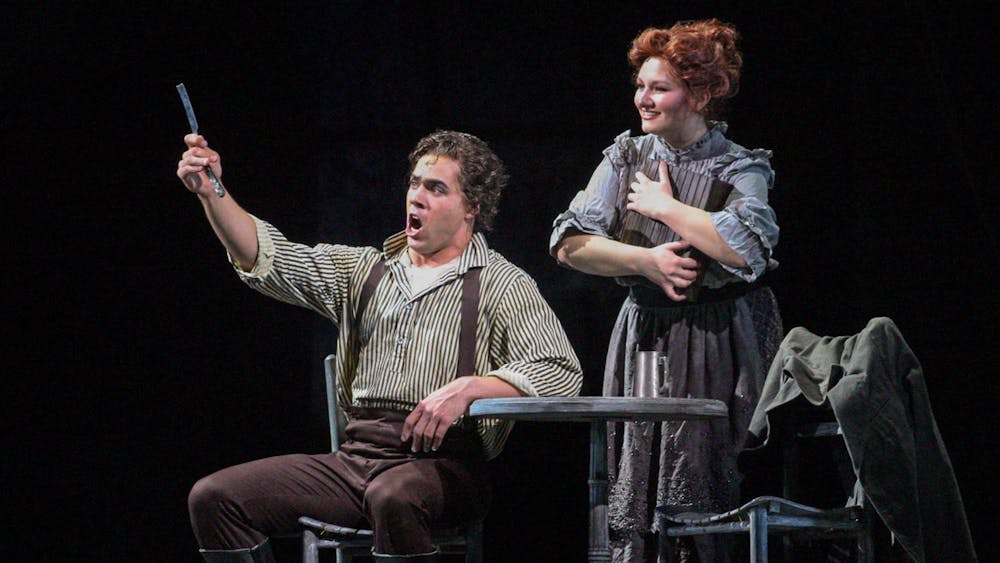Tales of chivalrous knights and lovely heroines found in the texts of French medieval literature reveal much about court culture, but professor E. Jane Burns is not interested in what these characters are doing.\nShe's interested in what they are wearing.\nBurns presented the work of her current project, "Courtly Love Undressed: Reading Through Clothes in Medieval French Culture," Thursday at Ballantine Hall in a speech titled, "Saracen Silk: Dolls, Idols, and Courtly Ladies."\nBurns is the chair of the Curriculum in Women's Studies at North Carolina University and author of "Bodytalk: When Women Speak in Old French Literature." Her newest work examines medieval culture through the opulent and lavish garments that adorned courtly ladies of the time and how the dress of these figures served as a connection between the Western and Eastern worlds.\nAs Burns taught courses on courtly love, she first began wondering if courtly love would look different if examined through a different venue -- clothing as described by the authors of 12th and 13th century French literature. Love was greatly structured around clothing and worldly goods, which did not merely serve as decoration or as illustration of wealth.\nBurns then became intrigued by where the costly fabrics for these extravagant garments were coming from. In the spiritual component of Arthurian stories, the quest for the Holy Grail moved the characters to travel to various locations in the East. \nThe robes of courtly heroines were cut from silks and adorned with gems acquired through the trade routes from the East, making the dress of courtly ladies serve as a cultural border between east and west. Burns said this element, seen through the clothing, challenges us to rethink the western phenomenon of medieval times and how the protagonists in literature were shaped.\n"Eastern goods have become meshed in what we've thought to be western court culture," she said. "The western identity of court culture depended on goods from eastern cities. The medieval items of clothing owe their French character to eastern imports." \nPurple-colored saracen silk is one of many types of silks worn by the courtly ladies and denotes an eastern location. As Burns explained, there are many stories in old French literature that feature the character of the Saracen princess, an eastern character usually of Moslem origin, who was very often converted to Christianity and married to a courtly knight. Burns began seeing connections between the Saracen princess and the western courtly lady when the courtly lady began appearing in the same Saracen silk.\n"The western court lady complicates the dichotomy through her clothes," Burns said.\nProfessor Sheila Lindenbaum, director of the Medieval Studies Institute, said she was pleased that the subject matter of Burns' work tied into so many of the University's classes, shown by the large attendance of the event. Many members of the mixed audience of undergraduates, graduate students and faculty were most intrigued by the link Burns made between the East and West cultures through the lavish clothing of the elaborate courtly lady.\n"It was interesting to see the ways in which clothing brought the East and West together but didn't resolve the tension between the two," said Brent Moberly, a graduate student in English. "The courtly lady belongs in either the East or West. She is a landmark without a place"
Professor looks at history of medieval attire
Get stories like this in your inbox
Subscribe





